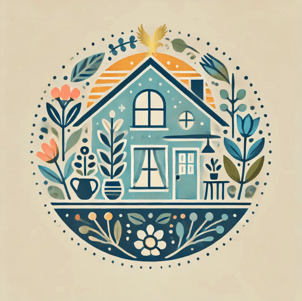The Latest Trends in Decoration: A Comprehensive Guide for Modern Interiors
2/9/202512 min read
In today’s fast-paced world, our homes and offices are more than just places to live or work—they are personal sanctuaries, creative spaces, and reflections of our personalities. With design trends constantly evolving, it can be challenging to keep up with the latest styles that not only captivate the eye but also offer functionality and comfort. In this post, we’ll explore the current trends in decoration, providing insights into how you can update your space with fresh ideas, sustainable practices, and innovative design solutions. From eco-friendly materials and minimalist designs to maximalist bursts of color and technology-integrated decor, this guide covers it all.
Embracing Sustainability: Eco-Friendly and Responsible Design
One of the most significant shifts in interior design is the growing emphasis on sustainability. As environmental consciousness rises, designers and homeowners alike are increasingly looking for ways to reduce their carbon footprint without compromising on style. Sustainable decor focuses on using renewable resources, repurposing vintage items, and integrating eco-friendly materials into everyday design.
Eco-Friendly Materials and Practices
Eco-friendly decor is all about natural materials that are both durable and sustainable. Reclaimed wood, bamboo, cork, and recycled metals are becoming staple materials in modern design. Not only do they offer a unique, rustic charm, but they also tell a story of conservation and respect for natural resources. Designers are sourcing these materials locally to reduce transportation emissions and support regional craftspeople.
In addition, the use of low-VOC (volatile organic compounds) paints and finishes is on the rise. These products reduce indoor air pollution and create healthier living environments. Sustainable decor also involves energy-efficient lighting and appliances, which not only help save the environment but also reduce utility bills.
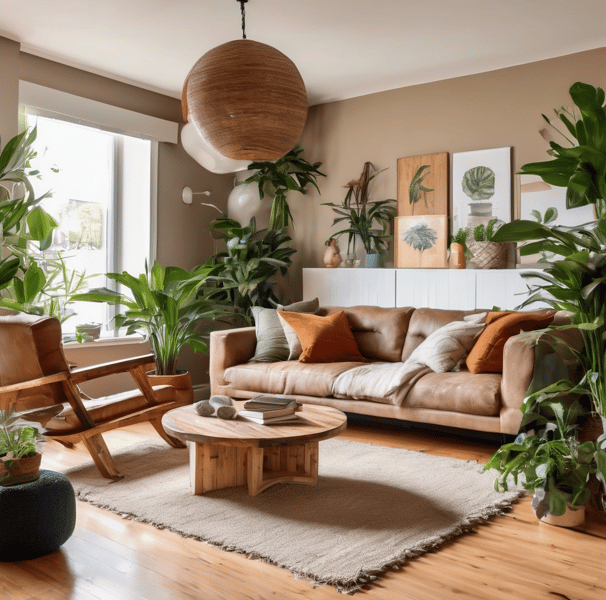

Vintage and Upcycled Furnishings
The charm of vintage pieces lies in their character and history. Upcycling—transforming old or discarded items into something new and valuable—has become a popular trend. Instead of buying new, many are choosing to breathe new life into pre-loved furniture. This approach not only promotes sustainability but also adds a unique, personal touch to spaces. The trend encourages creativity: imagine an old door repurposed as a headboard or a stack of vintage suitcases transformed into a chic side table.
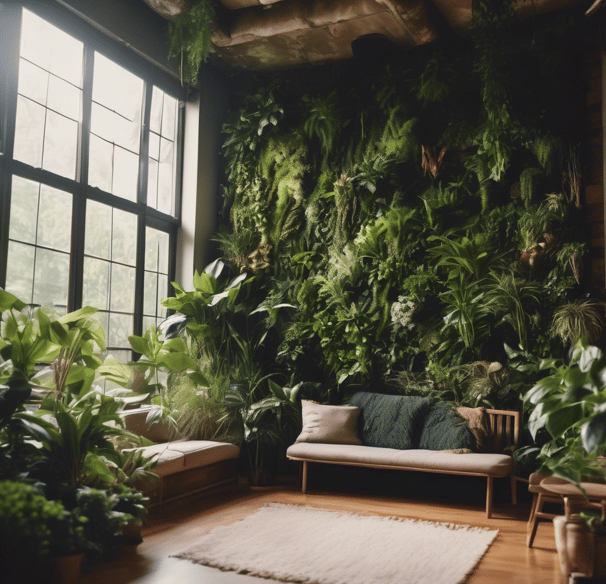

Minimalism and Modern Simplicity
In contrast to the lush, nature-inspired designs of sustainable trends, minimalism remains a steadfast approach in interior decoration. This style is characterized by its “less is more” philosophy, prioritizing clean lines, uncluttered spaces, and a neutral color palette.
The Essence of Minimalist Design
Minimalist interiors focus on functionality and simplicity. The design philosophy revolves around the idea that a calm, uncluttered space can reduce stress and enhance mental clarity. Every piece of furniture or decor is chosen with intention, and extraneous items are often removed to create a serene environment. This approach is particularly popular in urban settings where space is limited, and functionality is paramount.
Modern Minimalist Aesthetics
Modern minimalism isn’t about stark, sterile environments—it’s about thoughtful curation. A minimalist room might feature a statement piece of art, a uniquely designed piece of furniture, or a surprising splash of color against a predominantly neutral backdrop. The goal is to balance aesthetics and function, ensuring that every element contributes to the overall ambiance of the space.
The Role of Technology in Minimalism
Interestingly, technology is playing a significant role in modern minimalist design. Smart home devices, such as voice-activated assistants, automated lighting, and temperature control systems, are seamlessly integrated into minimalist environments. These devices not only add to the functionality of a space but also help maintain a clutter-free environment by consolidating multiple functions into single, sleek devices.
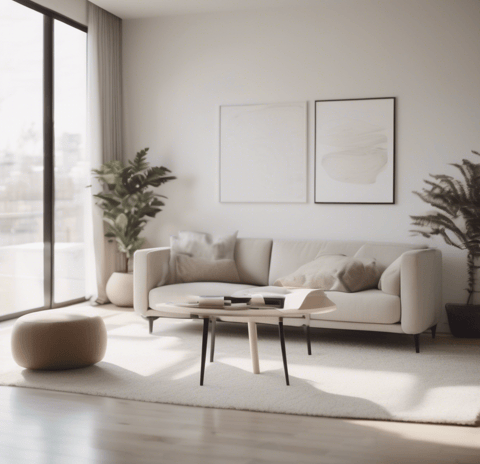

The Rise of Maximalism: Celebrating Bold Colors and Patterns
While minimalism has long been celebrated for its clean lines and understated elegance, there is a growing counter-trend: maximalism. This style embraces abundance, diversity, and an unapologetic love for vibrant color palettes, intricate patterns, and layered textures.
Defining Maximalism in Interior Design
Maximalism is all about making a statement. Unlike minimalist designs, which aim for simplicity and restraint, maximalist interiors are rich with personality and detail. They encourage a mix-and-match approach where bold prints, striking artwork, and eclectic furnishings come together to create a dynamic and visually stimulating space.
Incorporating Color and Pattern
One of the hallmarks of maximalism is the fearless use of color. Bright hues, jewel tones, and contrasting shades are used to create energy and vibrancy in a room. Patterned wallpaper, bold textiles, and an assortment of decorative accessories can all contribute to a maximalist aesthetic. The key is balance—while maximalism thrives on abundance, each element should still complement the others rather than overwhelming the space.
Eclectic Furnishings and Global Influences
Maximalism also embraces a global perspective. Designers are incorporating elements from various cultures, blending traditional motifs with contemporary designs. Think of Moroccan rugs, Indian textiles, and Scandinavian furniture—all curated to create a rich tapestry of styles. This trend is particularly popular among younger homeowners who value diversity and individuality in their living spaces.
The Intersection of Technology and Design
In an era where digital innovation is reshaping every facet of life, interior design is no exception. Smart homes and technological integration are at the forefront of current decoration trends, bringing convenience, security, and enhanced functionality to modern living spaces.
Smart Home Integration
The concept of a smart home is evolving beyond the mere installation of gadgets. Today’s smart homes are designed with technology seamlessly integrated into the overall aesthetic. For example, recessed lighting systems, voice-controlled assistants, and app-controlled thermostats allow homeowners to manage their environments effortlessly. The design challenge is to incorporate these elements in a way that maintains the room’s aesthetic appeal.
Home Automation and Energy Efficiency
Automation doesn’t only enhance convenience—it also contributes to energy efficiency. Smart sensors can detect when a room is unoccupied and adjust lighting and heating accordingly. This not only reduces energy consumption but also adds a layer of sophistication to the overall design. By merging technology with design, homeowners can create spaces that are both stylish and sustainable.
The Future of Interior Technology
Looking ahead, we can expect technology to become even more integrated into home decor. Augmented reality (AR) tools, for example, are beginning to allow homeowners to visualize changes before they’re made. Virtual interior design consultations and AI-powered recommendations are set to revolutionize how we approach decorating, making personalized design accessible to a broader audience.
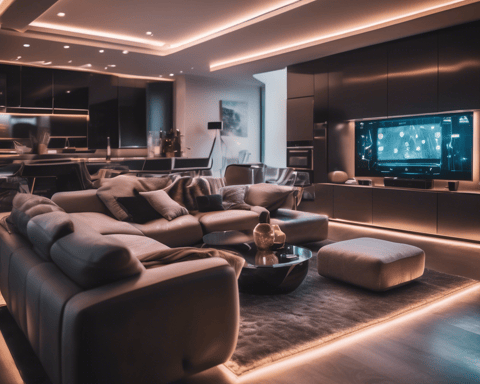

Natural Elements and Organic Forms
Beyond sustainability and technology, one of the enduring trends in modern decoration is the use of natural elements and organic forms. This trend emphasizes the importance of connecting with nature, even in urban environments, and incorporates textures and patterns inspired by the natural world.
Bringing the Outdoors Inside
The biophilic design mentioned earlier is just one facet of this trend. Homeowners are now incorporating elements like stone, wood, and water into their interiors. Natural stone countertops, exposed wooden beams, and even indoor fountains add a sense of tranquility and groundedness to any space. These elements not only enhance the visual appeal but also create a tactile connection to nature.
Organic Shapes and Fluid Lines
Modern decor is moving away from overly geometric forms to embrace more organic shapes and fluid lines. Curved furniture, asymmetrical layouts, and irregular patterns contribute to a sense of movement and harmony. This approach creates spaces that feel both dynamic and inviting, reflecting the natural world’s inherent unpredictability.
The Influence of Global Culture
The incorporation of natural elements isn’t limited to Western design trends. Global influences, from Japanese wabi-sabi to Mediterranean rusticity, celebrate imperfection and the beauty of nature. These diverse cultural perspectives are enriching the design landscape, offering a plethora of ideas for creating spaces that are both aesthetically pleasing and deeply connected to the natural world.
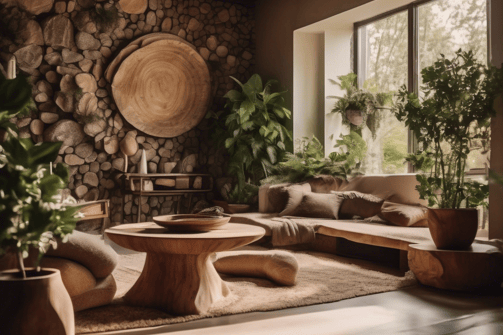

Multi-Functional Spaces: Adaptability in Design
As lifestyles evolve, so do the ways in which we use our living spaces. With more people working from home and juggling multiple responsibilities, the need for flexible, multi-functional spaces has never been greater.
Designing for Flexibility
Modern interiors are being designed with adaptability in mind. Rooms are no longer confined to a single function; instead, they are designed to serve multiple purposes. A living room might double as a home office, or a guest bedroom might also function as a creative studio. The key to creating these spaces lies in smart furniture choices—modular sofas, extendable tables, and convertible beds are all popular options.
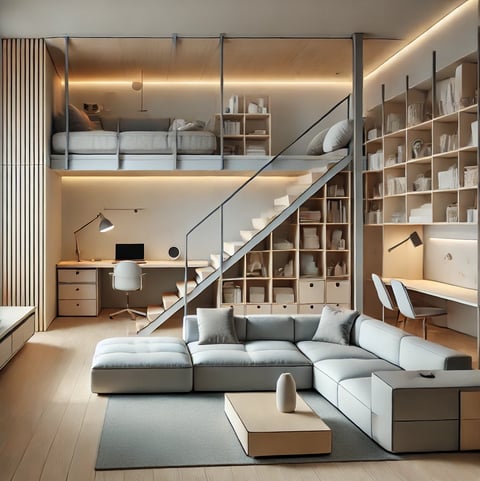

The Role of Storage and Organization
Multi-functional spaces often require innovative storage solutions. Built-in shelving, under-bed storage, and multi-purpose furniture help maintain an organized, clutter-free environment. These solutions are not only practical but also serve as design features that add depth and character to a room. The art of organization has become a crucial component of modern decor, ensuring that spaces remain functional even as they adapt to changing needs.
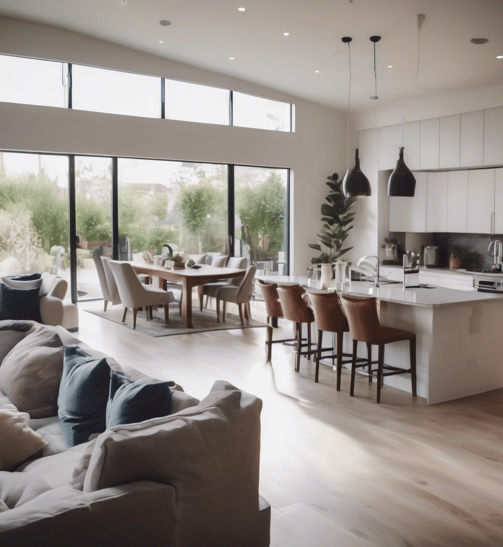

Open-Plan Living
The trend toward open-plan living is closely related to the need for adaptability. Removing unnecessary walls and partitions creates a sense of flow and connectivity throughout a space. Open-plan designs not only make spaces feel larger but also allow for greater flexibility in how the area is used. This layout is particularly popular in urban apartments and homes where space is at a premium.
Personalization and DIY: Crafting Unique Spaces
In a world where mass-produced items are readily available, there is a growing appreciation for personalized, handmade decor. The DIY movement is thriving, as homeowners seek to create spaces that reflect their personal tastes and experiences.
The Charm of Handcrafted Pieces
Handcrafted decor items have a unique charm that cannot be replicated by mass production. From artisanal pottery and custom-made furniture to hand-painted murals and bespoke textiles, these pieces add character and warmth to any space. The trend emphasizes the value of craftsmanship and the story behind each piece, making interiors feel more intimate and personal.
DIY Projects and Creative Expression
DIY projects are not just a cost-effective way to decorate; they’re also a form of creative expression. Many homeowners are taking on projects such as repurposing old furniture, creating gallery walls, or even building their own shelving units. The process of making something by hand brings a sense of accomplishment and personal connection to the space. Social media platforms and online communities have made it easier than ever to share ideas, learn new techniques, and get inspired by others’ creative endeavors.
Mixing Modern with Traditional
Personalization in decoration often involves blending modern elements with traditional techniques. For instance, a sleek, contemporary kitchen might feature a vintage chandelier or handcrafted wooden cabinets. This fusion of styles creates a layered, textured look that is both innovative and comforting. It’s a celebration of the past and the present—a design philosophy that values history, culture, and individual creativity.
Color Trends: Beyond Neutrals and Bold Accents
Color plays a pivotal role in interior design, setting the mood and tone of any space. While neutral palettes have long been popular for their versatility, recent trends are shifting towards bolder, more expressive color schemes.
The Return of Bold Colors
In contrast to the subdued tones of minimalism, bold colors are making a comeback in modern interiors. Deep blues, vibrant greens, and rich burgundies are being used to create dramatic focal points. These hues can add depth and personality to a room, making it feel warm and inviting. Designers often use bold colors in accent walls, statement furniture pieces, or carefully curated decor items to create visual interest without overwhelming the space.
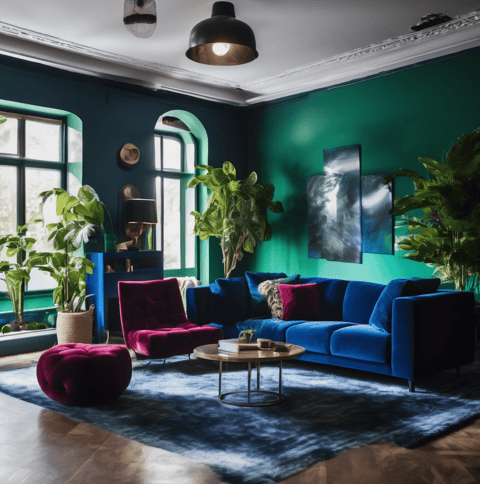

Gradients and Ombre Effects
Another trend gaining popularity is the use of gradients and ombre effects. This technique involves blending multiple shades of the same color to create a sense of movement and depth. Ombre walls, textiles, and even furniture pieces are emerging as popular choices for those who want to add a dynamic twist to their interiors. This approach allows for creativity and experimentation, transforming a static color scheme into a lively, engaging element of the design.
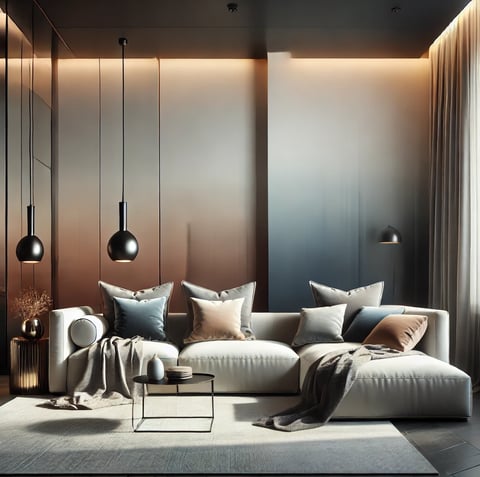

Monochromatic Palettes with a Twist
While bold colors are on the rise, there is also a renewed appreciation for monochromatic schemes—just with a twist. Designers are experimenting with varying textures, materials, and finishes within a single color family to create depth and visual interest. This method maintains a cohesive look while allowing for subtle variations that keep the space dynamic and intriguing.
The Global Influence on Local Trends
Today’s design trends are more interconnected than ever before. With the world at our fingertips, inspiration is drawn from a vast array of cultures, historical periods, and artistic movements. This global influence is evident in the eclectic mix of styles found in contemporary interiors.
Cultural Fusion in Design
From Scandinavian minimalism to Mediterranean rusticity and Japanese wabi-sabi, cultural influences are blending to create innovative design solutions. The modern interior is no longer bound by traditional regional styles; it is a melting pot of global aesthetics. This cultural fusion not only broadens the palette of design choices but also enriches the narrative of each space, making every room a conversation starter.
Travel-Inspired Decor
Travel has become a significant source of inspiration for many homeowners. Exotic prints, artisan crafts, and unique souvenirs from around the world are finding their way into modern interiors. This trend celebrates diversity and personal experience, allowing individuals to incorporate elements of their journeys into their everyday lives. Whether it’s a Moroccan pouf, a Turkish rug, or a piece of African art, travel-inspired decor transforms spaces into vibrant reflections of global cultures.
Fusion of Old and New
The blending of vintage and modern elements is another hallmark of contemporary decoration trends. Antique pieces paired with sleek, modern furnishings create a sense of balance and contrast, paying homage to history while embracing the future. This juxtaposition allows for creative expression and ensures that spaces remain dynamic, interesting, and timeless.
Tips for Adopting the Latest Trends in Your Home
With so many trends emerging simultaneously, it can be overwhelming to decide which ones to incorporate into your space. Here are some practical tips for adapting these trends to your personal style:
Start Small: If you’re new to a particular trend, such as maximalism or bold color schemes, begin by introducing small elements like accent pillows, artwork, or a single piece of furniture.
Mix and Match: Don’t feel confined to one style. Experiment with a blend of minimalist and maximalist pieces, or mix modern tech with vintage decor to create a unique look.
Personalize Your Space: Choose trends that resonate with you personally. Your home should reflect your tastes and experiences, so incorporate elements that tell your story.
Focus on Functionality: While aesthetics are important, functionality should never be compromised. Ensure that any design choice enhances your daily living experience.
Plan for Flexibility: As your needs evolve, your space should be adaptable. Invest in multi-functional furniture and versatile decor that can grow with you.
Consult Professionals: If you’re unsure how to integrate these trends into your home, consider hiring a professional interior designer who can provide tailored advice and innovative solutions.
The latest trends in decoration represent a vibrant tapestry of ideas, merging sustainability, technology, cultural influences, and creative expression into cohesive, personalized living spaces. From eco-friendly materials and minimalist designs to bold maximalism and smart home integration, modern interiors are evolving to meet the demands of a fast-changing world while still maintaining a strong connection to nature and personal identity.
Whether you are looking to completely overhaul your home or simply update a few key elements, these trends offer a wide array of possibilities for creating spaces that are both beautiful and functional. Embrace the trends that resonate with you, and don’t be afraid to experiment—after all, your home should be a reflection of your unique personality and vision.
By staying informed about the latest innovations in design, you can ensure that your living space not only meets your current needs but also remains a stylish, comfortable haven for years to come. As trends continue to evolve, the exciting challenge lies in blending timeless elegance with modern creativity to create a home that is truly your own.
In today’s dynamic world, the fusion of sustainability, technology, and personal expression is redefining interior decoration. The trends discussed in this post offer a roadmap for anyone looking to refresh their space while being mindful of environmental and cultural influences. Whether you are inspired by the simplicity of minimalism, the vibrant energy of maximalism, or the warmth of global decor, there is a trend out there that can transform your space into a personal haven that is both modern and enduring.
Remember, decorating your home is not just about following trends—it’s about curating an environment where you feel inspired, comfortable, and connected to the world around you. Happy decorating!
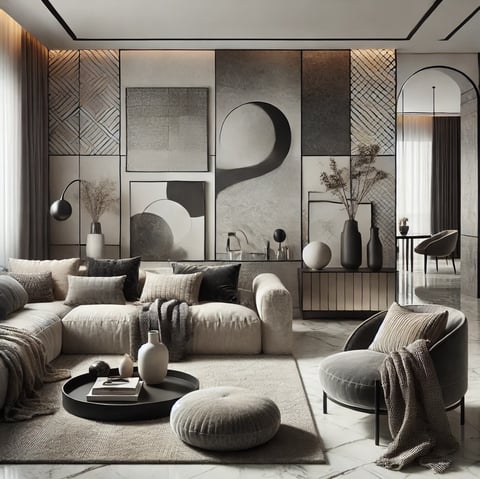

Biophilic Design
Biophilic design, the concept of bringing nature indoors, continues to gain momentum. This trend focuses on creating a strong connection between interior spaces and the natural environment. Incorporating indoor plants, natural light, and organic textures can significantly enhance well-being and productivity. Living walls, vertical gardens, and expansive windows that frame scenic views are all part of this trend. The benefits are twofold: a more aesthetically pleasing space and a healthier environment through improved air quality and a reduced stress level.
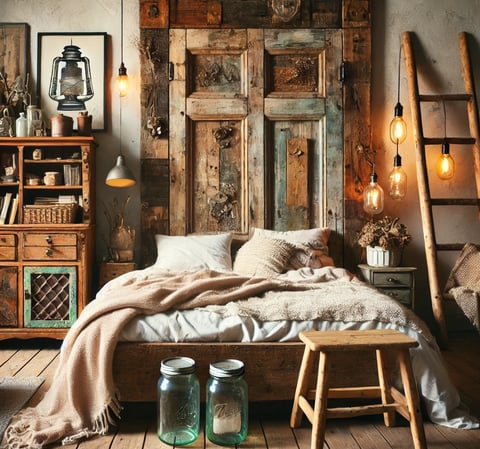

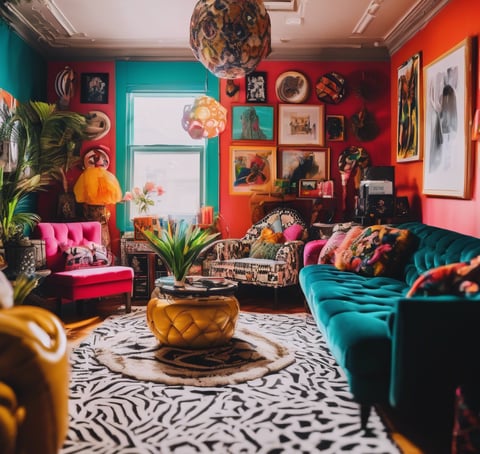



Inspiration
Explore ideas for your home and garden.
© 2025. All rights reserved.
